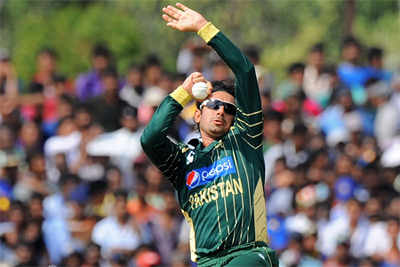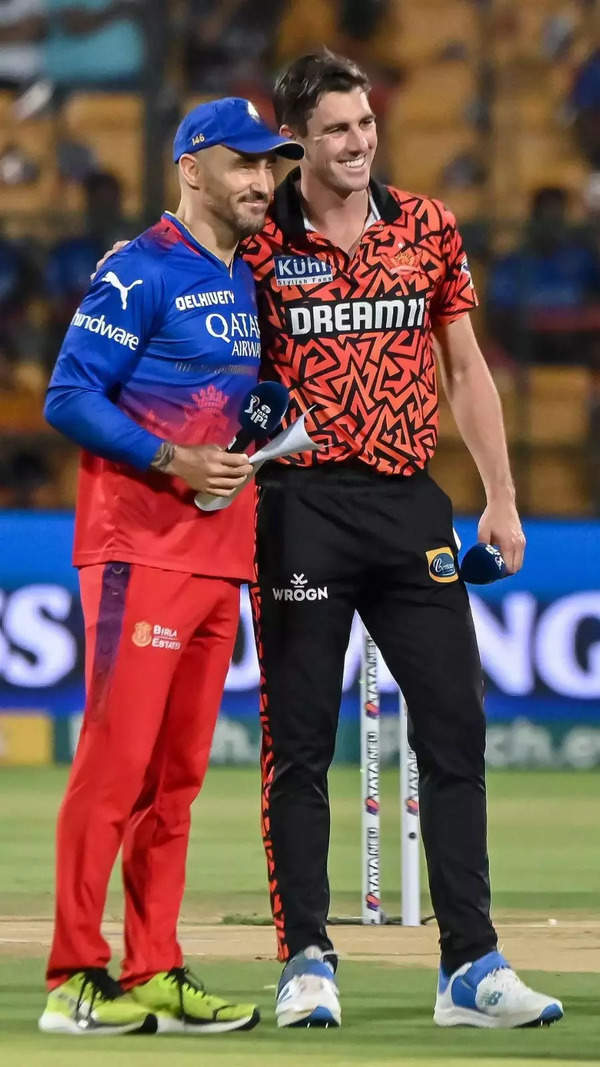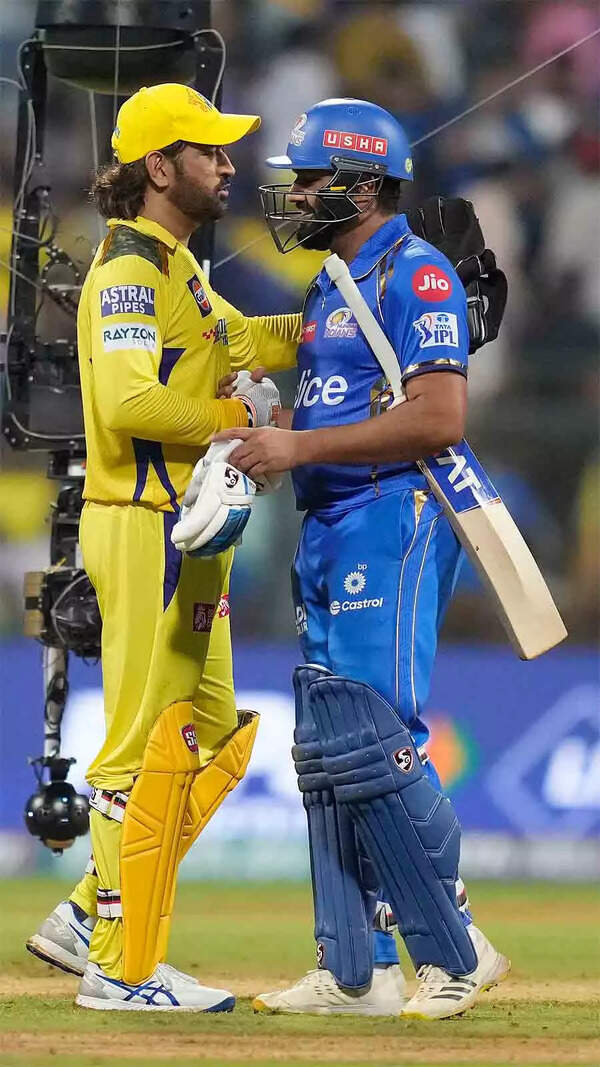- News
- Sports News
- Are Ajmal's wickets legal, asks Bishan Singh Bedi
Trending
This story is from September 10, 2014
Are Ajmal's wickets legal, asks Bishan Singh Bedi
Pakistan suffered a massive blow less than six months before the ODI World Cup when spin spearhead Saeed Ajmal was banned from bowling due to illegal action.

Pakistan suffered a massive blow less than six months before the ODI World Cup when spin spearhead Saeed Ajmal was banned from bowling due to illegal action.
NEW DELHI: Pakistan cricket suffered a massive blow less than six months before the ODI World Cup when spin spearhead Saeed Ajmal was on Tuesday banned from bowling due to illegal action. Currently the world's No. 1 bowler in ODIs, the off-spinner was reported for the second time in his career after the Galle Test against Sri Lanka last month.
Ajmal, 36, then underwent biomechanical tests in Brisbane."The analysis revealed that all his deliveries exceeded the 15 degrees level of tolerance permitted under the regulations. It found Ajmal's action to be illegal and, as such, he has been suspended from bowling in international cricket with immediate effect," the ICC said.
While the Pakistan board has decided against challenging the ban, Ajmal shrugged off the ICC action as a non-issue. Blaming his "not usual" right elbow, he vowed to bounce back before the World Cup. Former India captain Bishan Singh Bedi, cricket's most strident voices against the proliferation of illegal bowling actions, has criticized the International Cricket Council (ICC) for reacting "too late" and behaving like a "reformatory school" when it comes to issues related to chucking.
In the wake of the Saeed Ajmal suspension, Bedi asked if the Pakistani off-break bowler's wickets should now be under scrutiny. "It was inevitable. But it's a decision taken too late, when all the damage has been done and Ajmal has taken so many wickets in international cricket.
The 36-year-old Ajmal, one of the modern breed of off-spinners who rely heavily on the doosra and other canny variations, has had his action questioned on and off throughout his six-year career. His doosra, which goes in a direction opposite to a conventional off-break, was first reported in 2009 during a ODI series against Australia but was cleared by the ICC. The suspension stems from being reported by officials during Pakistan's Test against Sri Lanka in Galle last month, when he took five wickets in the first innings.
The Indian cricket team has had reservations about Ajmal's deliveries for a long time, stretching back to early 2012. The same year, after bagging 24 wickets in a series against England, Ajmal claimed the ICC had given him "special dispensation". Recently, former England skipper Andrew Strauss revealed that England had also questioned the legitimacy of Ajmal's action.
"Most people who claim to be mystery spinners enjoy an unfair advantage because they are being allowed to bowl illegal deliveries," said Bedi, "What is the point of correcting their action in a laboratory and then letting them loose? Is the ICC a reformatory school? A chucker cannot reform. He is merely rendered ineffective."
Bedi, who has in the past been severely critical of the ICC's decision to let Muttiah Muralitharan carry on bowling with a deformed elbow, said, "I hear Ajmal is now saying his elbow is not right. There is pressure from Pakistan to get their bowler back on the field. What is the ICC going to do now? Chucking issues should be left to on-field umpires to deal with. They should have the power to stop somebody from bowling."
Degree of tolerance:
Tests in the 1990s in England revealed that during a delivery all bowlers flex and extend their arms naturally. This also revealed that the laws which banned any flexing of the arm were impossible to follow. Hence, a tolerance threshold was implemented which was 10 degrees for fast bowlers, 7.5 degrees for medium pacers, and 5 degrees for spin bowlers. But enforcing these new measures proved problematic for its accuracy. A later study from 2002-03 showed that some of the greats had, on average, 9 degrees of elbow extension and some others has a flex of 10-15 degrees. Eventually the 15 degree allowance was made.
Ajmal, 36, then underwent biomechanical tests in Brisbane."The analysis revealed that all his deliveries exceeded the 15 degrees level of tolerance permitted under the regulations. It found Ajmal's action to be illegal and, as such, he has been suspended from bowling in international cricket with immediate effect," the ICC said.
While the Pakistan board has decided against challenging the ban, Ajmal shrugged off the ICC action as a non-issue. Blaming his "not usual" right elbow, he vowed to bounce back before the World Cup. Former India captain Bishan Singh Bedi, cricket's most strident voices against the proliferation of illegal bowling actions, has criticized the International Cricket Council (ICC) for reacting "too late" and behaving like a "reformatory school" when it comes to issues related to chucking.
In the wake of the Saeed Ajmal suspension, Bedi asked if the Pakistani off-break bowler's wickets should now be under scrutiny. "It was inevitable. But it's a decision taken too late, when all the damage has been done and Ajmal has taken so many wickets in international cricket.
"What was the ICC doing till now? All those batsmen who lost their wickets to him, all those teams which lost a game because of an Ajmal spell, should they now come forward and say we have been wronged? If they can't, then what is the point of rehabilitating these bowlers," Bedi told TOI on Tuesday.
The 36-year-old Ajmal, one of the modern breed of off-spinners who rely heavily on the doosra and other canny variations, has had his action questioned on and off throughout his six-year career. His doosra, which goes in a direction opposite to a conventional off-break, was first reported in 2009 during a ODI series against Australia but was cleared by the ICC. The suspension stems from being reported by officials during Pakistan's Test against Sri Lanka in Galle last month, when he took five wickets in the first innings.
The Indian cricket team has had reservations about Ajmal's deliveries for a long time, stretching back to early 2012. The same year, after bagging 24 wickets in a series against England, Ajmal claimed the ICC had given him "special dispensation". Recently, former England skipper Andrew Strauss revealed that England had also questioned the legitimacy of Ajmal's action.
"Most people who claim to be mystery spinners enjoy an unfair advantage because they are being allowed to bowl illegal deliveries," said Bedi, "What is the point of correcting their action in a laboratory and then letting them loose? Is the ICC a reformatory school? A chucker cannot reform. He is merely rendered ineffective."
Bedi, who has in the past been severely critical of the ICC's decision to let Muttiah Muralitharan carry on bowling with a deformed elbow, said, "I hear Ajmal is now saying his elbow is not right. There is pressure from Pakistan to get their bowler back on the field. What is the ICC going to do now? Chucking issues should be left to on-field umpires to deal with. They should have the power to stop somebody from bowling."
Degree of tolerance:
Tests in the 1990s in England revealed that during a delivery all bowlers flex and extend their arms naturally. This also revealed that the laws which banned any flexing of the arm were impossible to follow. Hence, a tolerance threshold was implemented which was 10 degrees for fast bowlers, 7.5 degrees for medium pacers, and 5 degrees for spin bowlers. But enforcing these new measures proved problematic for its accuracy. A later study from 2002-03 showed that some of the greats had, on average, 9 degrees of elbow extension and some others has a flex of 10-15 degrees. Eventually the 15 degree allowance was made.
End of Article
FOLLOW US ON SOCIAL MEDIA










